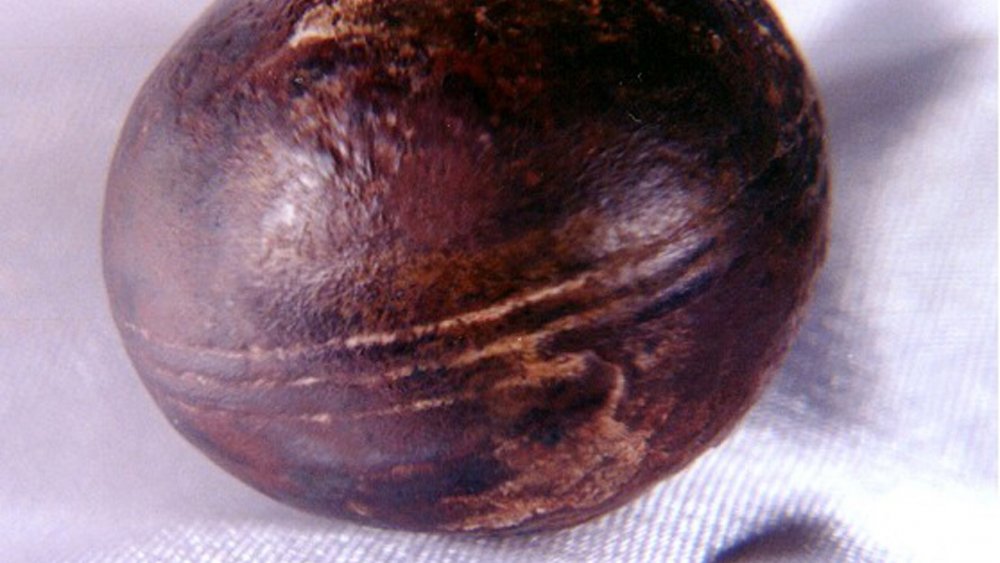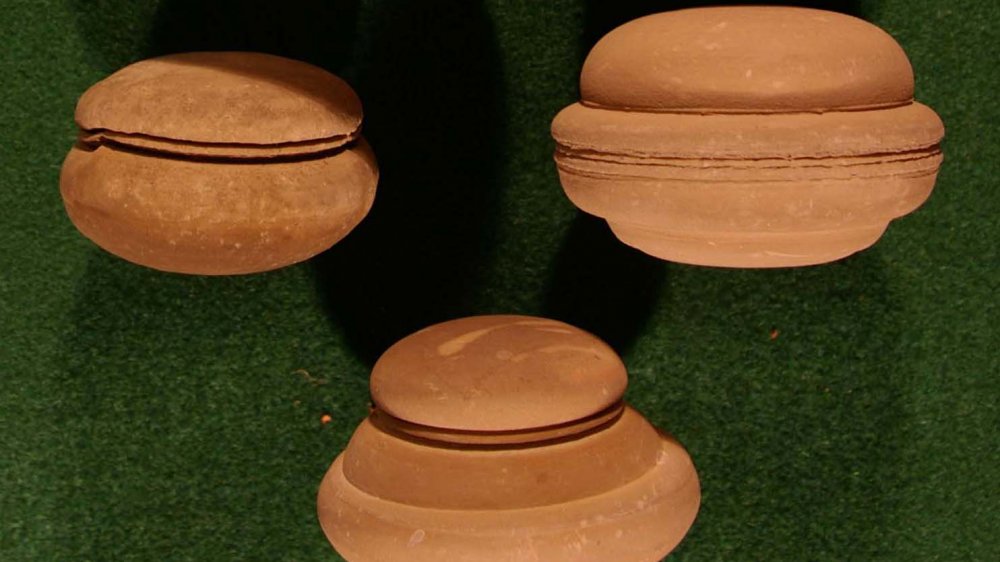The Mystery Of The Klerksdorp Spheres
Ovoid balls of rock with three lines across their middle, created under mysterious circumstances and evoking an almost mystical sense of curiosity? No, we're not talking about those Shiva-powered MacGuffin stones from Indiana Jones and the Temple of Doom; you know, the one with the slave children and that guy who had his heart ripped out? Nice.
No, we're talking about the Klerksdorp Spheres, 0.5-10cm long, reddish stones dug out of mines in Ottosdal, a northwest area of South Africa, as recounted by Amusing Planet. They're classified as pyrophyllites, a layered silicate formed by hydrothermal alteration (i.e., they dried out). Despite their names, they're not, in fact, spheres, but somewhat flat, oval, and some have three parallel lines across their length. The kicker? They're about 3 billion years old, making them a true window into an earlier era of our planet.
Of course, their strangely artificial, or manufactured, look is what gives them their mystique. It's also why, for decades, ancient astronaut theorists, conspiracy theorists, and the like, started debating their origins. According to the National Center for Science Education, the National Enquirer ran an article in 1979 speculating that the Klerksdorp Spheres were "Out-of-Place Artifacts" (OOPARTs), or objects that don't fit with the current timeline regarding Earth's creation and the development of civilization. When in doubt: aliens or Atlantis. This is admittedly a much more fun explanation than "these rocks are basically Mother Earth's version of concrete," but when in actual doubt: science.
Mother Nature's finest, homemade concrete
It's the appearance of the Klerksdorp Spheres that makes some people skeptical about their origins: too symmetrical, too perfect, and those lines — how do they work, even? In biological organisms straight lines and hard angles are very rare, sure, but that's because animal cells are irregular and flexible. But in the case of crystals, one look at a microscope-enhanced snowflake, diamond, or even just salt from the local Trader Joe's, shows a highly ordered structure.
In fact, the Klerksdorp Spheres are just one of a number of examples of the same phenomenon found across the Earth: concretion, where clay, silt, or some flexible material fills in the gap between layers of minerals. Over time (and add a bit of dehydration), the stone appears to shrink into a curved shape, and the lines across the surface form naturally. Other instances include the Moqui Marbles in Zion National Park, and the gorgeously fluid stones of Schoharie County, New York, depicted in Worthpoint. It's easy to see how someone could mistake such concretions for a piece of pottery from an ancient civilization, for example.
Legend surrounding the stone's discovery adds to the confusion about their natural origins. The man who found them claims that NASA told him that the stones couldn't have been made outside of zero gravity, a patently incorrect statement with no records to back to it up. So sorry, ancient astronaut theorists: this one really is just Mother Nature's own beauty.

